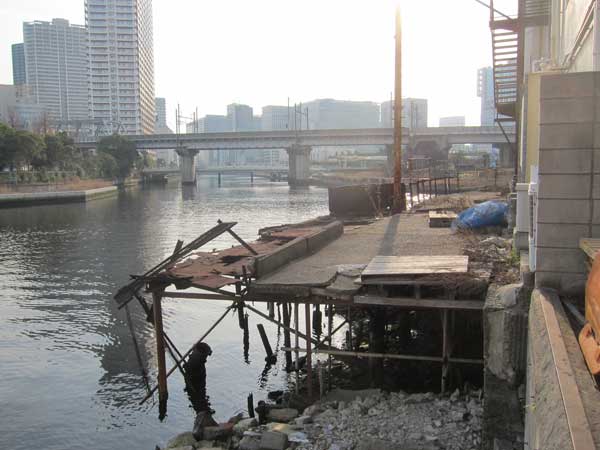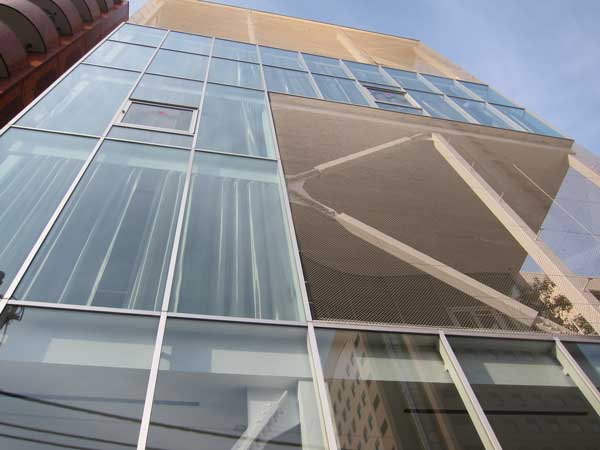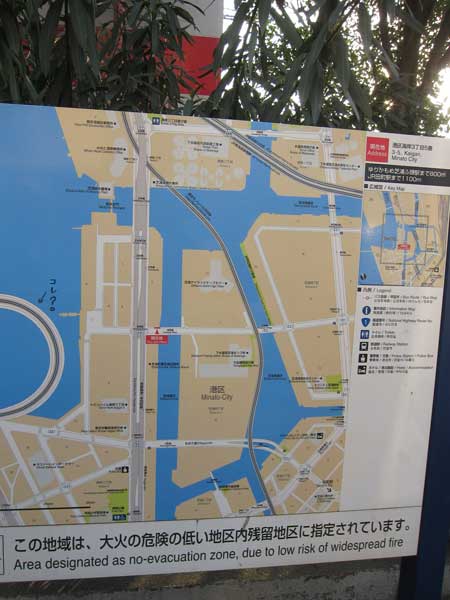
この運河の景色は素敵ですね。戦後の建築の歴史が見えます。幅が広い運河は産業革命前の江戸時代を呼び起こします。自然な感じがします。都市は有機体だと思い出させてくれます。大きい都市はいつも少しずつが変わっていきます。芝浦一丁目で。
I love this canal view, the layers of visible history in buildings, and the wide water that evokes pre-industrial Edo life. Even the regrettable additions, like the elevated freeways, show how Tokyo constantly evolves not through great design but by continual addition to what was already there.
There is so much transportation infrastructure on this wide canal in Shibaura Ichome. I also love how the small post-war house at the corner has been built up over the years with additions, and then surrounded by a taller modernist office and more recent, larger buildings that are more about function than form. There’s something very calming about seeing this large expanse of water, and a view of how Tokyo became layered with new structures over time.












